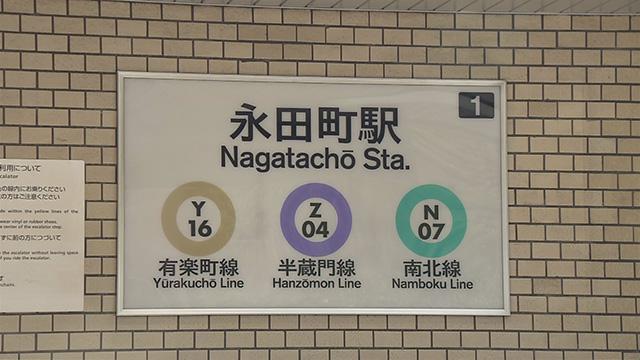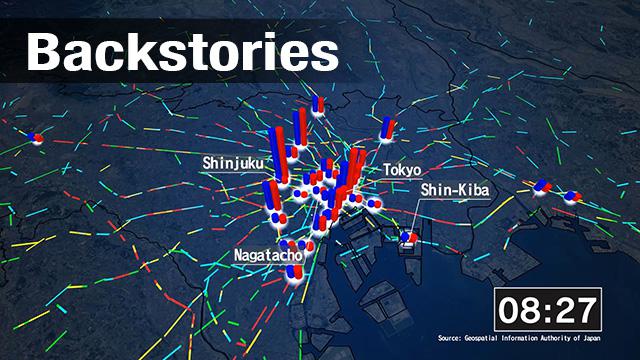Congestion simulation
Tokyo's railway system already operates at near capacity, especially during the morning rush hour.
Professor Azuma Taguchi of Chuo University, an expert on Japan's transportation networks, ran a simulation on the expected congestion in Tokyo and its surrounding areas during the Olympics. His simulation took in the number of commuters and spectators, and the railway and competition schedules to produce images of the expected congestion.
The blue areas indicate commuter traffic at key stations on weekdays. The red represents additional people expected to be at the stations at morning rush hour during the Games.
The number of people at Shinjuku and Tokyo, two of the busiest stations in the city, at 9 AM on a weekday may double during the Games.
Extreme congestion expected
Many competitions are scheduled to start in the morning. Rush hour in central Tokyo peaks shortly after 8:30 AM, overlapping with when some of the events start.
Taguchi says his simulation shows the stations will be so packed that people will be unable to move.
"If a train comes, more people will arrive at the already-packed stations," Taguchi says. "It will be very dangerous. The congestion may also halt train services."

The simulation shows the most serious congestion is likely to occur at Nagatacho Station, where 3 lines cross. Spectators will change trains here to get to the New National Stadium. Taguchi says his calculations indicate 3 times the usual number of people here.

Stranded spectators
Another simulation shows the sizes of crowds and flow of people around each venue.
For example, people head to a venue near Tokyo to watch a soccer match shortly after 8 PM. The event finishes at around 11 PM and many spectators remain around the stadium.
Taguchi says many of these people would miss the last train to central Tokyo and be stranded overnight.
Railway operators tackle problem
Railway operators are trying to find ways to mitigate congestion.
Tokyo Metro officials say they are thinking of changing passenger flows at stations. They have installed machines to incentivize people to take different routes. A commuter who gets out at a less crowded exit can check in and earn points toward gifts.
"We are trying to come up with various plans," says Tokyo Metro's Kazunori Wakita. "But it will take time to see whether this measure is successful or not."

Private companies trying to adapt
Shibuya-based real estate company Daikyo is trying out a different schedule to minimize the disruption caused by the games.
The firm's headquarters are located about 500 meters from the New National Stadium. Company executive Sachiyo Hatori says she was worried the congestion on railways and roads could disrupt the commutes of her 1,800 employees.
She decided to introduce staggered work hours. Employees can choose to come in anytime between 7 AM and 1 PM to avoid the start time of Olympic events.
"Having different work times and allowing people to work from home will be essential to maintaining high productivity, even during the Olympics," Hatori says.

Tokyo's rush hour is notorious, with images of stations officials pushing commuters into packed train seen throughout the world.
But experts say congestion at the Olympics could be worse than anything visitors have in mind. They say it's up to organizers to put in measures before the games to avert this kind of scenario.
